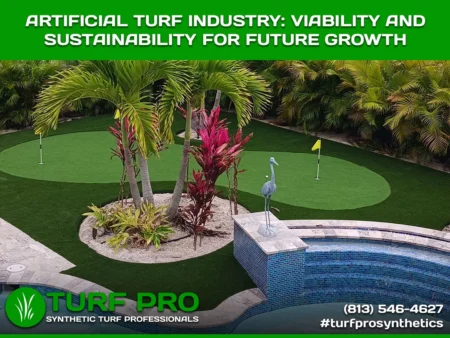 With the introduction of artificial grass in the early 1990s, the landscape sector saw a synthetic revolution. Due to its potential for resource and environmental conservation, adaptability in design and application, and profitability in business models, it has progressively grown in popularity.
With the introduction of artificial grass in the early 1990s, the landscape sector saw a synthetic revolution. Due to its potential for resource and environmental conservation, adaptability in design and application, and profitability in business models, it has progressively grown in popularity.
Due to the benefits, it offers for resource and environmental conservation, its adaptability in design and application, as well as its potential for profitability in a range of business models, synthetic turfs have rapidly gained popularity.
But is the market already fully developed? Has the capacity for development and innovation been reached? To investigate the profitability and sustainability of synthetic turf in the economic environment, we spoke with specialists in the field.
Growth and Sustained Success in a Fragmented Market
Early versions of artificial grass lacked aesthetic appeal, but with improvements in manufacturing techniques, material production, and the availability of trained labor, both their beauty and price have greatly improved. Homeowners now value free time over the “therapeutic” advantages of gardening and landscaping, which has caused a larger societal shift. The artificial turf market will benefit from this change.
Although commercial manufacturers, distributors, and installers may appear to hold the lion’s share of the market, it is moderately fragmented and offers endless opportunities for those looking to break into the sector. With undiscovered areas and regions, artificial grass usage is still in its infancy.
In states where it is more developed, like the Southwest, the industry is still expanding at a rate of more than 15% annually. Additionally, improvements in manufacturing technology have produced more applications for utilization, which improves the growth potential.
The Future of the Artificial Turf Industry is Green
With the global turf market expected to reach $7 billion by 2025, artificial grass, which was created for sporting applications, now serves landscape and recreational functions. The adoption rates indicate that the market will expand for many years to come.
Given that the artificial turf sector is still one that is expanding quickly, this product is excellent for introducing new goods and markets. A growing number of professionals are looking for the advantages of synthetic turf, including custom builders, landscape architects, real estate brokers, management companies, and local governments.
Artificial grass fields are a preferred option for local sports leagues because they can withstand two to three times more traffic than real grass fields. A synthetic turf pitch can support up to 3,000 hours of use annually, or roughly 1,500 two-hour games. When compared to real grass fields, which might be more expensive to maintain, synthetic turf fields can also bring in more money.
Conclusion
The potential for expansion and innovation in the artificial grass market is virtually endless. The industry has prospects for expansion because of improvements in manufacturing technology, an increase in the pool of skilled labor, and a general cultural change away from prioritizing leisure activities like gardening and landscaping.
The advantages of synthetic turf are sought after by custom home builders, landscape architects, real estate brokers, management companies, and local governments. Consider Turf Pro Synthetic if you’re looking for high-quality artificial grass installation in the Tampa area.
Turf Pro Synthetic has been providing top-quality synthetic turf supplies and installation services to customers in Tampa Bay, FL, for many years. The company has built a strong reputation in the area as a reliable and trustworthy provider.
